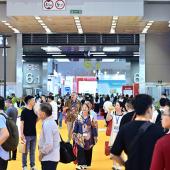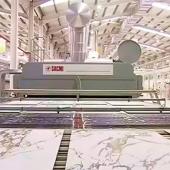Acimac organises roundtable discussion on the future of the Sassuolo ceramic cluster
Is it sufficient to focus on the Sassuolo ceramic cluster? What are its prospects for the next 5 years? What is the way forward?
These were the questions addressed at a roundtable discussion organised by Acimac on 10 May, as part of the conference entitled “Il distretto allo specchio” (A focus on the Sassuolo ceramic cluster).
Business leaders from the ceramic and ceramic machinery sectors met at the Association’s headquarters in Villa Marchetti for a lively and stimulating debate that revealed a generally optimistic outlook for the sector’s future.
The conference was opened by introductory talks given by Acimac’s Director, Paolo Gambuli, who provided an overview of the world economic and market scenarios, and by Stefano Alberti from Studio Pier Giovanni Ascari & Soci, who compared the economic performances of ceramic companies located in the Sassuolo cluster that adopt different competitive strategies. The ensuing roundtable discussion was moderated by Ettore Tazzioli, director of local television station TRC.
Acimac chairman Pietro Cassani noted the need to look beyond the Sassuolo cluster and to reorient strategies based on the signals arriving from the international markets. He also stressed the importance of continuing to pursue the policy of internationalisation. Franco Manfredini, chairman of Confindustria Ceramica and of Casalgrande Padana, offered a very optimistic outlook, arguing that Italian industry has the excellence and strength needed to emerge from the downturn. “We are the best at manufacturing both finished products and the production technology,” he said. “This is an ability that is the envy of the whole world.” Next to speak was Angelo Lami, chairman of Ceramicolor and of Inco, who discussed the problem of rising raw materials costs and procurement difficulties. Esmalglass managing director Carlos Ferrer commented positively on the Sassuolo cluster, noting how it has always succeeded in reinventing itself. A much more cautious outlook for the future was offered by Claudio Lucchese, chairman of Florim Ceramiche, who believes that the current situation of stagnation and downsizing will continue over the next few years. Sergio Sassi, chairman of Emilceramica, complained of the lack of support provided to businesses by the Italian institutions and stressed the difficulties of conducting business activities in Italy. Graziano Verdi, chairman and managing director of GranitiFiandre, agreed, noting the additional difficulties of labour and taxation. However, Verdi believes that the cluster will maintain its aesthetic and technological leadership in the future. Franco Stefani, chairman of System Group, discussed the need to adapt and to produce less sophisticated technologies for the countries that are now driving the market. “Italy is failing to grow, so the ceramic cluster must reorganise,” said Stefani. Lastly, Fabio Tarozzi, managing director of Siti – B&T Group, while recognising the strengths of Italian products, also stressed the weakness of the country’s institutions.
Concluding the roundtable discussion, the participants agreed on the need to promote collaboration between ceramic and ceramic machinery producers and to join forces in searching for new products and technologies to safeguard the future of the Sassuolo ceramic cluster.
Did you find this article useful?
Join the CWW community to receive the most important news from the global ceramic industry every two weeks






















